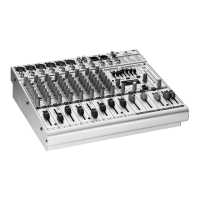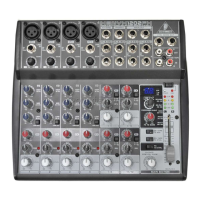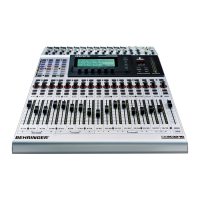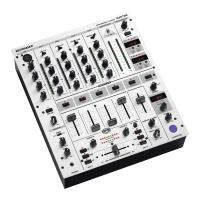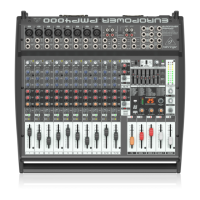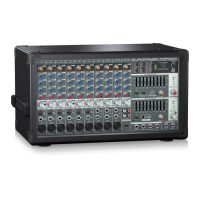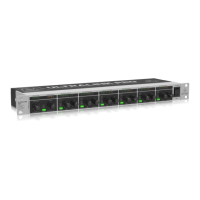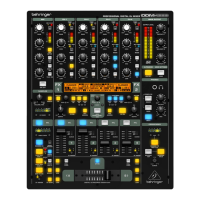12
B-CONTROL
DEEJAY
BCD3000
By pressing CUE, the Song Position cursor jumps back to the last
selected cue point. If no cue point has previously been selected,
the cursor jumps automatically to the beginning of the track.
Pitch Bend
The Pitch Bend function allows you to change the track’s speed
so that it can be matched to the second track being played on the
other channel. There are several possibilities:
V The Pitch fader is used to control the Pitch function of the
software application. Move the Pitch fader up or
down to decrease or increase the speed.
V The Bend “+” and Bend “–” buttons correspond to the
software’s function of the Pitch Bend button. Press one of
these buttons to change the speed for a short time.
V If the deck is in Play mode, you can also use the wheel to
momentarily speed up or slow down the song in order to
synchronize it with the other deck.
Loop function
The Loop function, which is integrated into the TRAKTOR 3 LE
software, can also be controlled by the BCD3000. The following
control elements are available for this purpose:
V SET LOOP
V RELOOP
The first time the SET LOOP button is pressed, a 4-beat loop
starts seamlessly on the next beat—the LED of the RELOOP
button lights up in this case. To stop the loop, press the same
button (SET LOOP ) again—the LED of the RELOOP button
goes out. The music continues at the end of the loop without any
pause.
This loop is stored until you load a new song into the deck. Press
the RELOOP button to call up the saved loop again. Press
the SET LOOP button to exit.
When the LED of the RELOOP button is off, press the SET LOOP
button to specify a new loop.
Sync
The Sync function is a tool in the TRAKTOR 3 LE software that
synchronizes two pieces of music for you. This function should
be activated in the channel being monitored or else the rhythm
may be irregular, which would be very annoying. In doing so, the
monitored tune is matched to the piece of music currently played.
5.3 Extended Setup
The BCD3000 system can do without external drives and media,
however, it is possible to extend this setup of controller and
software by adding a CD player (which may already be available)
or two turntables. In this case, the analog signal is fed into the
software mixer and can be processed with all the decks’ real-
time functions (such as EQ, cut-off filter, effects, fader,
crossfader, etc.). Controlling these functions is just as intuitive
as the internal mixing.
Fig. 5.2: Expanding the standard setup
In this setup, the standard setup shown in fig. 5.1 is expanded
by adding two turntables and a microphone. The connection to
the computer and the other peripheral devices is the same as in
example 1.
Connect the outputs of the turntables to the inputs A and B.
When using input B, the PHONO/LINE switch needs to be in the
“PHONO” position. Optionally, you can connect a CD player to
input B. In this case, the PHONO/LINE switch needs to be in the
LINE position. Activate the inputs by pressing the input source
buttons EXT IN A or EXT IN B . You are able to manage up
to four source signals by switching between the analog source
and the software signal.
You can connect a dynamic microphone by using the available
MIC input, which has an XLR connector. There is a MIC LEVEL
control in the MIC INPUT section with which you can adjust the
volume level of the microphone signal. The EQ controls LOW and
HIGH let you change the microphone signal additionally. When
levels are too high, the Clip LED lights up and audible distortion
may occur. If this happens, turn the MIC LEVEL control to the left
until the LED does not light up anymore.
The ANALOG INPUT A is switchable between the
microphone signal and PHONO A. This can be done the following
ways:
V Via MIDI Program Change command (see Table 6.7),
V In Windows XP, via the tab “ASIO” or “WDM/MME” in Control
Panel.
5. OPERATION
